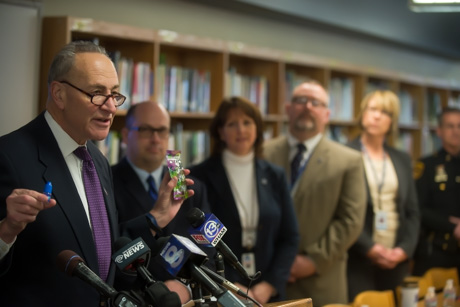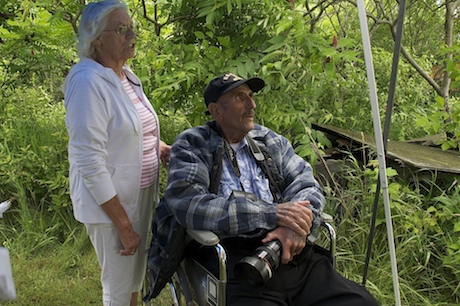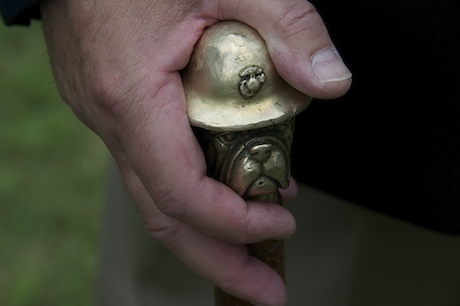FOR IMMEDIATE RELEASE: February 2, 2010
SCHUMER: OBAMA BUDGET INCLUDES MUCH NEEDED BUDGET RELIEF FOR NEW YORK - PROPOSAL WOULD SEND HUNDREDS OF MILLIONS DIRECTLY TO COUNTY GOVERNMENTS TO HELP PREVENT PROPERTY TAX HIKES, STAVE OFF LAYOFFS OF COPS, FIREFIGHTERS AND TEACHERS
Budget Includes Schumer-Authored Language to Ensure Counties Get Their Fair Share of Funding and Relief
President's Budget Includes Extension of the Boost in Federal Medicaid Reimbursements Originally Passed As Part of the Stimulus
Schumer: Cap Region will receive approx $21M; CNY $20M; RFL $24M; WNY $29M; ST $13M; HV $43M, and NC $10M
Today U.S. Senator Charles E. Schumer announced President Obama’s 2011 Budget released yesterday will include billions in urgently needed budget aid for New York’s counties that will help local governments avoid property tax hikes and stave off layoffs of cops, firefighters and teachers. The proposal will extend the boost in federal Medicaid reimbursements, called the Federal Medical Assistance Percentages (FMAP), which was originally passed as part of the American Recovery and Reinvestment Act (ARRA). Schumer will say the proposal will send New York State and county governments billions of dollars over the first six months of 2011. In ARRA, Schumer successfully fought to include a proposal called “local share,” which ensures that localities receive budget aid directly, in addition to aid given to the states.
“Unemployment is already too high and unless we get fiscal aid directly to our beleaguered county governments during this downturn, they will be forced to raise property taxes, layoff vital workers and make thing worse, instead of better,” said Senator Schumer. “This money will be a tremendous shot in the arm for taxpayers across New York because it will help prevent property tax hikes, mitigate the impact of service cuts, and reduce layoffs of cops, firefighters, and teachers. This support will help alleviate, though it will not eliminate, the tough choices facing the State and counties during these difficult times.”
“Today’s announcement by Senator Schumer is great news for the hardworking taxpayers of Erie County. This latest allocation of targeted FMAP funding appears to plug our proposed budget gap for 2011. Senator Schumer is to be applauded for understanding that New York’s property tax payers need protection during these troubled economic times when Erie County and other local governments have experienced a historic decline in sales tax collections.” said Erie County Executive Chris Collins
“I am grateful to Senator Schumer for his work to secure additional FMAP monies for New York’s counties. His leadership on this issue continues to be vital. FMAP is one of the only stimulus programs that provides direct relief to property taxpayers by offsetting some of the cost of Medicaid, the largest unfunded mandate that counties face. The FMAP monies received by Onondaga County helped us avoid additional layoffs, painful service reductions and tax hikes in 2009 and 2010. Given the continued loss of jobs and the possibility of additional state cuts, an extension of FMAP money in 2011 would relieve some of the pressure from what is shaping up to be another difficult budget cycle.” Said Onondaga County Executive Joanie Mahoney
“I want to thank Senator Schumer for recognizing that the federal Medicaid supplement is by far the most important stimulus program for counties. Every dollar Albany County receives is a dollar saved by property taxpayers,” said Albany County Executive Michael Breslin. “Last year, that amounted to more than $11 million for Albany County. That’s equal to a property tax savings of 17%.”
“We are sincerely grateful for Senator Schumer’s continued leadership on this critical issue. By providing these funds directly to the counties, we are able to bypass Albany’s bureaucracy while continuing to stabilize local tax rates,” said Orange County Executive Ed Diana
Schumer today said President Obama’s budget includes a proposal to extend for an additional six months the two-year increase in FMAP that was passed as part of the ARRA stimulus package. The original FMAP increase sent states and localities $87 billion for 2009 and 2010. By the end of 2010, New York State and county governments will have received an estimated $11.1 billion from the federal government from the federal government.
The proposal that was included in the President’s upcoming budget will extend the FMAP boost passed in the stimulus for an additional six-months covering the first six months of Fiscal Year 2011. The newly proposed total nationwide boost states with $25.5 billion. New York State is estimated to receive as much as $3 billion based on projections by New York State. Of that, the NYSAC preliminary projections show that $150 million will go to upstate New York.
Schumer successfully fought to include a legislative language (the “county-local share” proposal) that ensures that counties and local governments across New York State receive their fair share of the FMAP relief for their Medicaid programs. Since the enactment of the Medicaid program in 1965, counties in New York have been required to share in the costs of services. New York is one of seventeen states where local governments share with the state in Medicaid participation. Counties are mandated by the state to contribute approximately $7 billion annually or about 32 percent of the non-federal share of the State’s Medicaid Program.
Recognizing that New York State counties and the New York City locality are in dire need of direct fiscal aid and are forced to share the cost of Medicaid, Schumer – a member of the Senate Leadership and the Finance Committee which has jurisdiction over Medicaid – fought to ensure that a “local share” proposal was included in the stimulus to ensure that New York State counties and localities received the billions in direct aid from FMAP as part of the economic stimulus plan.
The Federal Medical Assistance Percentage (FMAP) is a Medicaid matching rate enacted in 1965 that determines the federal funding share for state Medicaid programs. The federal government matches state funds spent on Medicaid, based on the state’s FMAP. The FMAP varies from state to state; and New York’s FMAP is 50%. Thirteen states have FMAPs equal to the 50 percent floor in 2008 (CA, CO, CT, DE, MD, MA, MN, NV, NH, NJ, NY, VA, WY). By law, the FMAP cannot be lower than 50 percent, or higher than 83 percent. The FMAP formula is designed to account for income variation across the states and is based on rolling three-year average per capita income data for each state. The Department of Commerce’s Bureau of Economic Analysis calculates FMAP annually.
During an economic downturn, as state revenues become stagnant or decline, the number of Medicaid beneficiaries increases because of job losses and the health care coverage that comes with employment.
Below is how the funding breaks down across the state. All data is based on preliminary projections provided by the New York State Association of Counties (NYSAC) and is subject to New York State Social Services law, Medicaid claims experience, and other economic conditions.
The President’s budget will provide the Capital Region with a projected $21 million in budget relief.
The President’s budget will provide Central New York with a projected $20 million in budget relief.
The President’s budget will provide the Rochester Finger Lakes Region with a projected $24 million in budget relief.
The President’s budget will provide Western New York with a projected $29 million in budget relief.
The President’s budget will provide the Southern Tier with a projected $13 million in budget relief.
The President’s budget will provide the Hudson Valley with a projected $43 million in budget relief.
The President’s budget will provide the North Country with a projected $10 million in budget relief.
###






